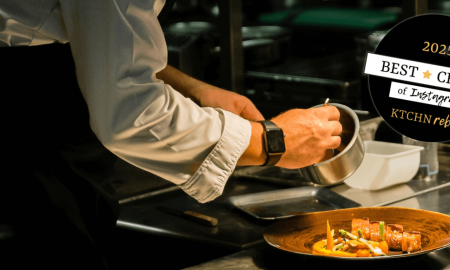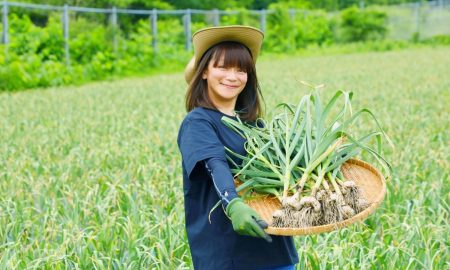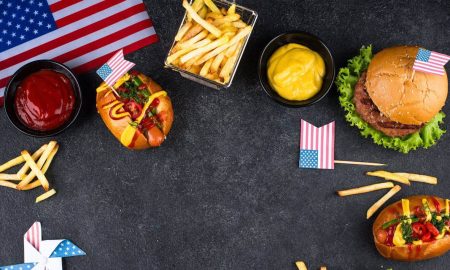Terroir is not a word that is necessarily associated with meat in our latitudes. This term, which is difficult to translate into German, refers to the natural factors of a place and is used primarily by winegrowers and wine connoisseurs. However, this is actually not quite the case. After all, it is precisely through the relationship between humans and (farmed) animals that the peculiarities of a region, its people, culture and culinary customs crystallize in just as unadulterated a way as in a bottle of fine wine. Sure, you can argue about the our liking for certain characteristics. However, it is precisely these characteristics that give a product its profile or, as Albert Howard, the founder of organic farming, put it, “something like a personality” – and in this way serve as a hopeful alternative to the globalized one-size-fits-all product. Because it is affected by both extremes, this is especially evident when it comes to beef. Not counting mass-production, farmers in all corners of the world are tinkering with the world’s best beef in small batches but on a grand scale. What tricks do they have up their sleeve? What does an American premium beef keeper swear by? What doesn’t come into the Irish cattle guru’s enclosure? Do they really hire a geisha to massage the legendary Kobe cattle?
Strict rating procedure
Farms and ranches as far as the eye can see, endless green pastures with stately Black Angus cattle, and yes, even their own university dedicated to perfecting beef production down to the last detail. It is therefore hardly surprising that in the American state of Nebraska, an incredible 6.5 million cattle are slaughtered annually for every 1.8 million inhabitants. More than one billion euros per year is pumped into the coffers by national and international beef exports, making the state the the absolute number one in the USA. The USA has a strict rating procedure, which is monitored and regulated by the federal government. The USDA Agricultural Marketing Service, a branch of the Department of Agriculture, has adopted a precise definition that distinguishes beef quality into eight broad groups, with Prime, Choice and Select among the cream of the crop for steak. Because only two percent of the total production in the USA receives this seal of quality – in Nebraska, by comparison, the figure is five percent – prime quality can only be found in the absolute top gastronomy.
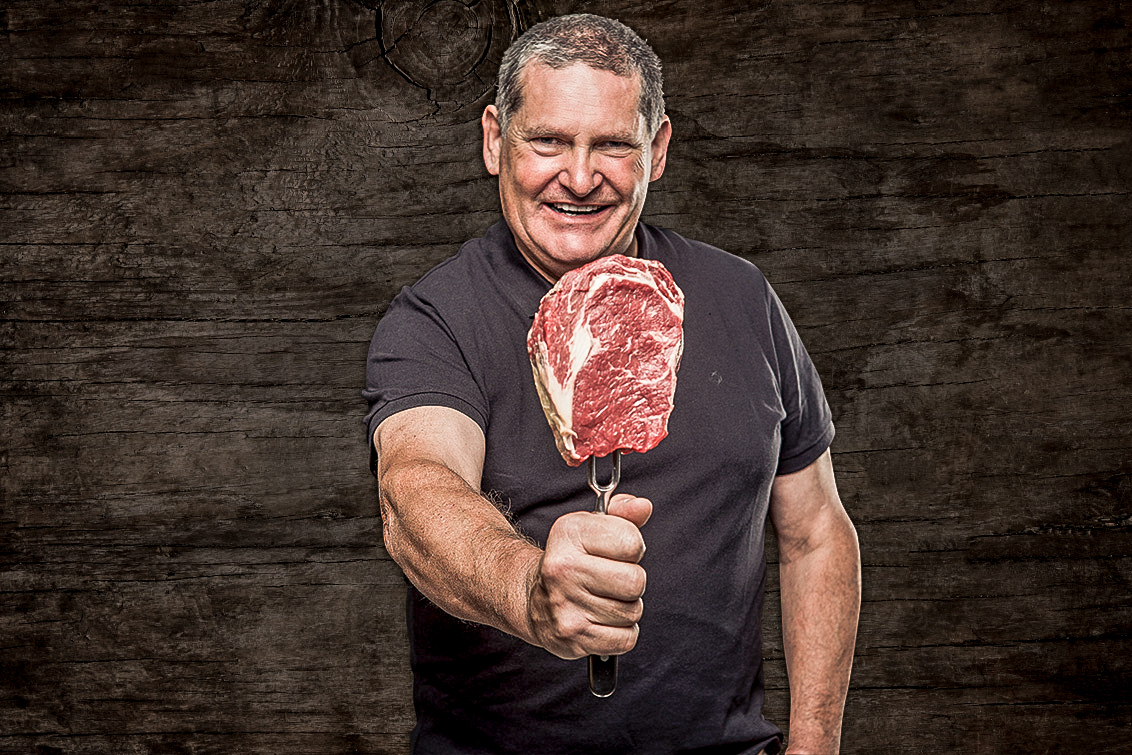
Tour de Beef / Image: Rolling Pin
Agricultural land of milk and honey
One man who knows how to create such a fine piece is Douglas Beller. On his farm in the sleepy town of Lindsay, which he runs together with his two brothers Dwayne and Dennis, know-how passed down through generations meets high-tech expertise and science. The herd is monitored in detail with the help of complex computer programs that provide continuously updated data on the physical condition of the cattle “It also allows us to trace each of our calves all the way back to birth,” says Doug Beller. “It helps us tremendously to see where the best calves are coming from, which allows us to then work directly with the breeders to identify the best breeding bulls.” Now in their third generation, the three brothers manage around 1976 acres (800 hectares) of land on their farm, which specializes in corn cultivation and cattle fattening. “We can feed our own animals for the most part with the corn we grow here on the farm.” The trio’s ability to be self-sufficient is due to a natural resource treasure located in the Midwestern United States: the Ogallala Aquifer. This huge underground aquifer supplies water to more than 90 percent of Nebraska’s land, turning the area into an agricultural cornucopia. The main ingredient in their concentrate feed is high-moisture corn, a corn silage that must be harvested at about 30 percent moisture. “The time frame for harvesting is extremely small. In some cases, we have to harvest our entire fields within a week,” explains Doug Beller. The ingenious calf diet also includes dry corn, grass, supplements and a very special ingredient that people in Nebraska swear by – distillers grain. This by-product, which is produced during the distillation of ethanol from corn, has a doping effect on the already robust and hearty cattle. “The energy and protein value is higher than regular corn and, when used properly, allows for truly high-end beef.”
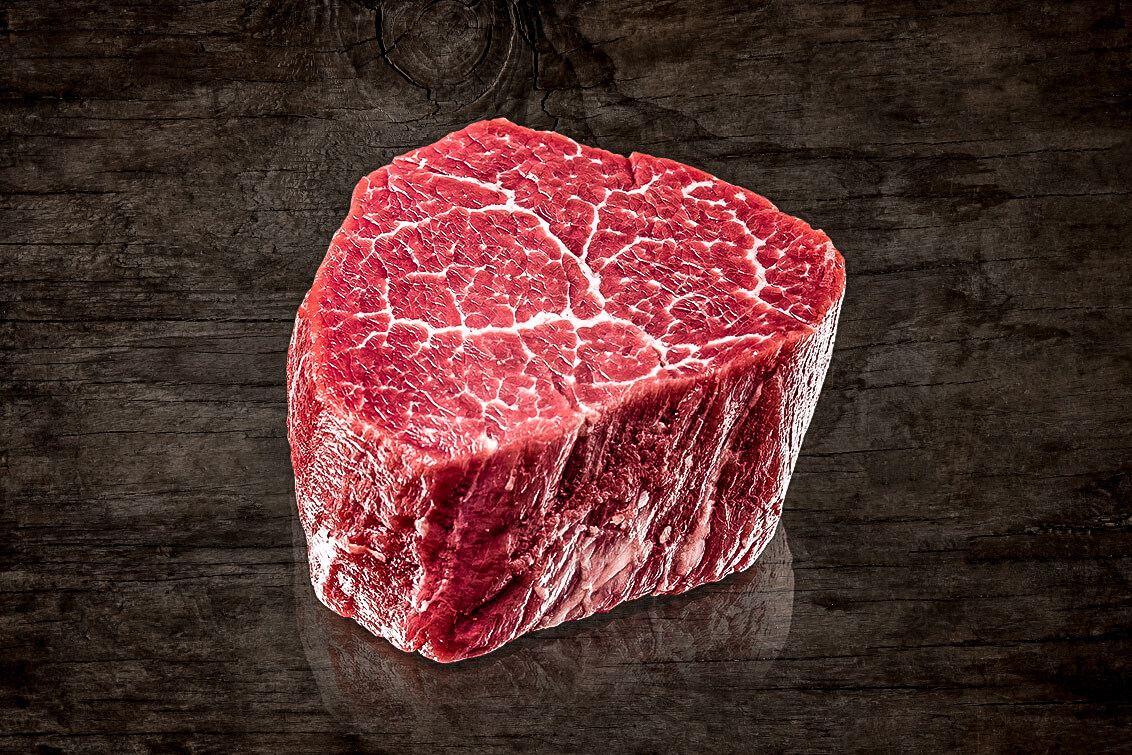
Beef US GOP Filet Tenderloin Side Muscle | Image: Albers
The animals are fed twice daily with this superfood, which gives Nebraska beef its unique flavor and a tenderness that is second to none. Once or twice a month, a nutritionist visits the Beller Farm and inspects the calves’ condition. The aim is to continually improve the feed mixture so that it meets the high quality standards.
Irish flagship farmer
The fact that feed is the cornerstone of the producer’s craft is also apparent when it comes to Beller’s Irish counterparts Luke Smith and Paul Turley. When compared to the USA, the major difference here – that is, uninterrupted grazing without fattening, which is typical in Ireland – is not a matter of craftsmanship in the narrower sense, but rather a deeply rooted, cultural understanding of cattle farming, one that has been perfected in Ireland for over 5,000 years. Particularly in the acclaimed Ulster region, herds of cattle are as much a part of the landscape as the tap is to the pub counter. It is precisely here that Luke Smith follows the Irish tradition while also opening it up to the globalized market of the 21st century without any reservations.
However, Luke Smith is no typical farmer. Indeed, long before the cattle graze and thrive on the green, rolling pastures of Ireland, Smith concerns himself with genetics. This means that he organizes the logistical conditions necessary for creating promising breeds of cattle. Smith’s most successful venture to date was a cross between a Michitsuru bull from Japan and the Black Angus cow that is so common in Ireland. What this means in concrete terms is that the semen of a Michitsuru bull is first sent to Ireland; this bull was chosen by Smith and Japanese researchers based on vast amounts of data. Fertilization, that is, inserting the bull semen into a Black Angus cow, then takes place in Ireland. “I have a number of farmers throughout Ireland who receive precise husbandry guidelines from me in the form of a contract. That means I make sure they tend their land properly for the cattle, feed them as specified and look after their welfare.” Among Smith’s farmers, one in particular stands out. “You could say Paul Turley is my flagship farmer,” Smith gushes about the two-time Beef Farmer of the Year from Downpatrick.
The almost endless meadows at the northwestern tip of Europe are mainly located in coastal Downpatrick and enjoy a mild oceanic climate, which allows the cattle to graze in the open air almost all year round.

Beef Filet Ex Chain | Image: Albers
What’s more, the salty air of the Atlantic Ocean gives Irish beef its characteristic aromatic flavor. “All of our cattle are outside all the time until the time they’re slaughtered,” Smith says. In Downpatrick, that means a whopping 27 to 30 months. In comparison, in conventional cattle farming, if at all, the animal is slaughtered at 18 months. However, the well-kept secret of Downpatrick’s unique beef is nutrition – to put it more precisely, linseed oil. “I came up with the idea simply because the Ulster region was heavily dominated by linseed oil production for centuries,” says Luke Smith. “Linseed oil has been shown to benefit animal health in many ways,” Smith explains. “Because linseed oil reduces stress in the body, the cattle grazing freely in the pasture fields are already in a calm state of mind. That, in turn, means their immune systems are stronger than average, so we can completely do without antibiotics.”
Husbandry in a spa-like atmosphere
Let’s now move on to another island. Unlike Ireland, Japan is far from an insider’s tip for die-hard steak fans. Still, the two catchwords Wagyu and Kobe are enough to make any foodie’s mouth water. Typical here, however, is that despite all that reverent drooling, few of them really know what these words even mean. To clear things up, let’s take it one step at a time. Wagyu, first of all, means nothing more than Japanese (Wa) cattle (gyu) and can therefore include a variety of breeds. Kobe, on the other hand, is subject to a strict origin designation and even stricter quality control. First, they must be purebred Tajima cattle. Second, they must have been born, raised, and slaughtered in Hyōgo Prefecture, Japan. However, quality assurance goes beyond death. This is because the Kobe certificate is only awarded after the meat has been examined for various factors by the government inspection body. This includes an assessment of fat content and meat color on a scale of one to seven, and of the degree of marbling on a scale of one to twelve. The key point here is that Wagyu meat can only really call itself Kobe if it has a beef marbling score (BMS) of six.

Kobe beef | Image: Albers
No doubt about it, feed and husbandry while the cattle are still alive are crucial – even if there are numerous myths surrounding the diet and rearing of this Japanese marvel. These myths include that the animals are accompanied by traditional Japanese koto music, soaked in beer and massaged daily; according to some sources, they are even massaged by a geisha hired specifically for this purpose. However, the reality, while not quite the opposite, is somewhat more mundane. Although koto music is the stuff of myths, one of the very few Kobe importers in Europe, Frank Albers of Albers Food, assures us that, “Yes, they do massage Kobe cattle.” He continues by saying, “They are fed cereal, in other words, the same stuff people eat in our latitudes.” They are also mainly kept in stalls, but with one big difference: “This stall husbandry system for cattle is not tethering, as is common here in Europe, but rather the cattle are allowed to roam freely in the open air,” Albers says.
Personalities, not just animals
Perhaps it’s because of their close geographic proximity to Japan, but no matter the reason, the Warmoll family in Brisbane, Australia, is probably not one of the Wagyu breeding pioneers outside of Japan by accident. However, while the very high fat content of the Japanese original makes it only somewhat suitable as steak, Jack’s Creek Wagyu Beef combines tenderness, bite and juiciness to create the perfect meat. Of Irish descent, the Warmolls have been raising cattle for 70 years. David Warmoll is in charge of the Wagyu herd. In the 1990s, he and his brother Phillip laid the foundation for today’s herd by crossing the genetic material of their Black Angus cows with that of an award-winning Black Wagyu bull of the Tajima breed. The breeding bull came from Hyōgo Prefecture in Japan, whose capital, Kobe, is the center of Japan’s Kobe Beef culture. In technical terms, F2 to F4 generation Wagyus are bred at Jack’s Creek Farm. In percentage terms, this corresponds to a Wagyu proportion versus Black Angus of 75 to 98 percent. For Wagyu, this ratio results in comparatively moderate marbling levels exceeding US Prime Beef, which makes it suitable for the large steakhouse cuts. The animals grow up in an exceptionally clean environment by European standards. At first, the young cattle graze freely for 15 to 17 months until they reach a body weight of around 660 to 880 pounds (300 to 400 kilograms). This is followed by a feeding period lasting up to 450 days, during which they are fed grain in open-air enclosures. Phillip Warmoll produces most of the feed on the farm himself. Oats and some corn are the ingredients that go into the trough until the animal reaches a slaughter age of up to 32 months.

Black Angus Filet | Image: Albers
Tour de Steak makes one thing very clear: for the best steak in the world, there simply is no secret recipe. Climate conditions, feeds and husbandry strategies are too diverse. From the Beller family to Paul Turley and the Warmoll family, however, there is a common thread. Only those who master the delicate interplay between the climate conditions of the respective region and the know-how of breeding and husbandry that has developed over years, if not decades, can turn cattle into personalities full of character – made of flesh and blood, of course.
Feed:
Oats and some corn are the ingredients that go into the trough until the animal reaches a slaughter age of up to 32 months.’
Husbandry:
At first, the young cattle graze freely for 15 to 17 months until they reach a body weight of around 660 to 880 pounds (300 to 400 kilograms). This is followed by a period of feeding in outdoor enclosures for up to 450 days.
Age at slaughter:
up to 32 months
Breed:
Cross between Wagyu and Black Angus
Feed:
Corn silage, dry corn, grass, supplements and distillers grain, which is a by-product of the distillation of ethanol from corn.
Husbandry:
The mild climate allows the animals to live outdoors all year round. The last three to four months before slaughter, the calves are moved to feedlots where they are fattened.
Age at slaughter:
13 to 15 months
Breed:
Angus
Feed:
Cereals, concentrated feed from beets, bran, corn and potatoes – however, the exact mixture remains the breeders’ trade secret.
Husbandry:
Mainly kept in stalls, but not in the European way: In Japan, the cattle are not tethered, but rather are raised in the open air. Massage included.
Age at slaughter:
Kobe Wagyu takes at least twice as long on average to reach slaughter maturity as conventional beef, with some animals taking even longer. Slaughter maturity at 1763 to 2204 pounds (800 to 1000 kilograms) for bulls and and 992 to 1322 pounds (450 to 600 kilograms) for cows.
Breed:
Tajima-Gyu
Feed:
Heavy on the linseed oil – the exact recipe is kept secret.
Husbandry:
Continuous grazing without fattening. The salty sea air in particular gives the meat of Irish cattle an unmistakable flavor. Crossbreed between Michitsuru and Black Angus.
Age at slaughter:
27 to 30 months
Breed:
Crossbreed between Michitsuru and Black Angus.



